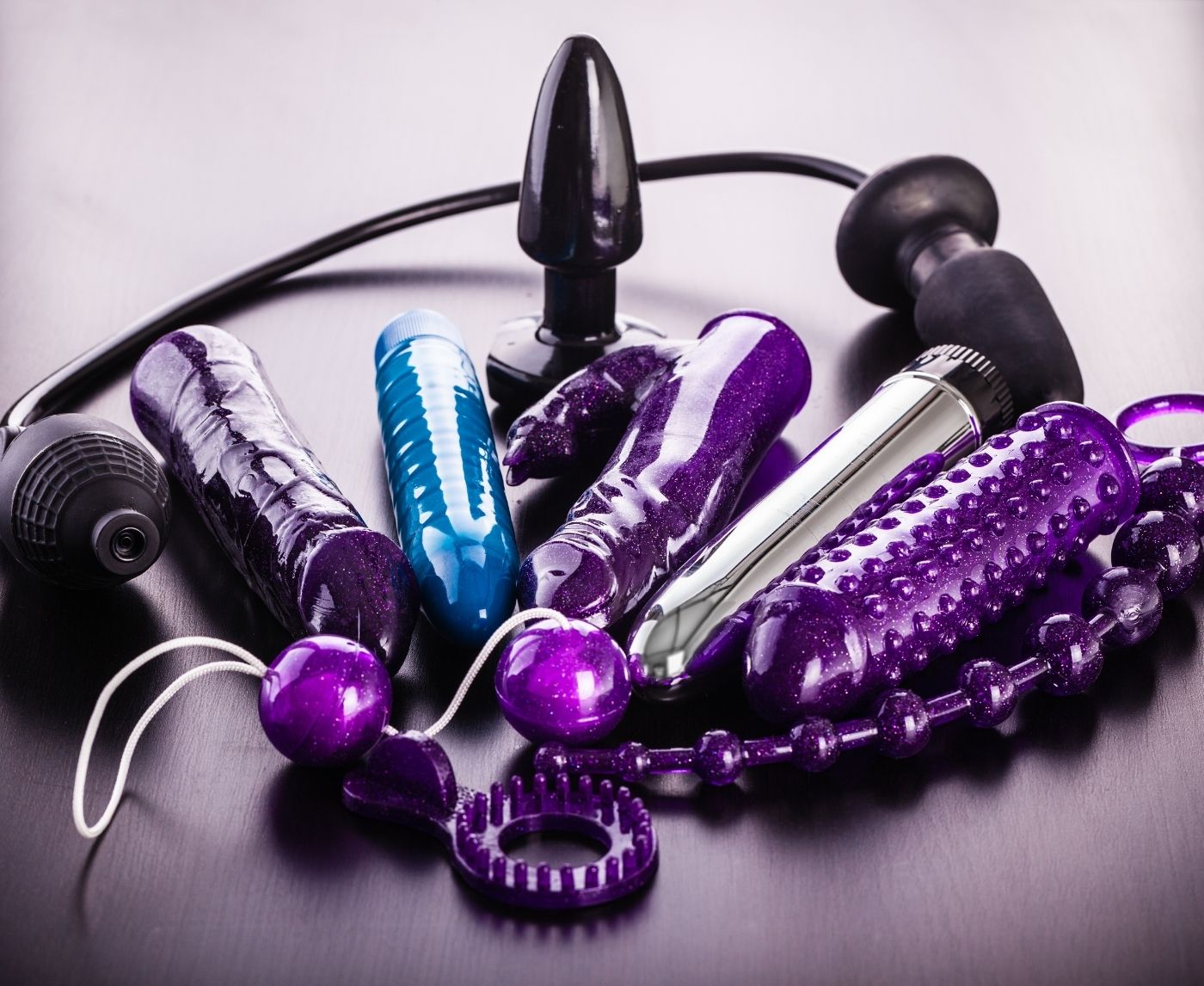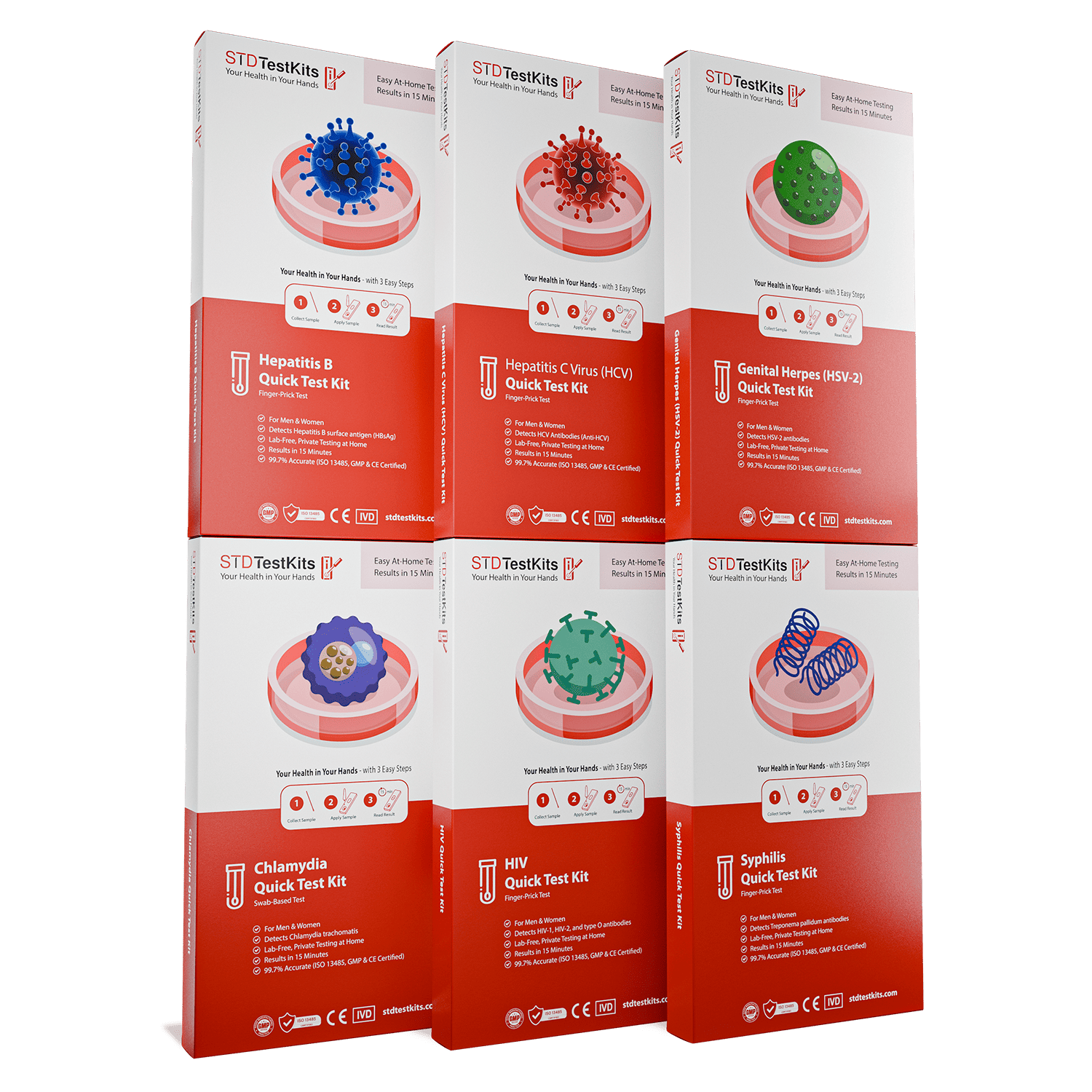The Numbers Don’t Lie Why Non-Sex Workers Often Have Higher Undiagnosed STD Rates
Quick Answer: Yes, you can get STDs from oral sex, sex toys, and skin-to-skin contact, even without penetration. The best at-home STD test kits detect those exact risks, especially when they include oral, genital, and swab-based options.
This Isn’t Just a Gay Thing, It’s a Health Thing
Let’s get one thing straight (pun intended): STDs aren’t about orientation. They’re about contact. And that means anyone with genitals, mouths, or shared surfaces (like toys) is potentially at risk. For queer women and nonbinary folks who have sex with women, that risk often goes overlooked, not because it’s low, but because the medical literature and standard clinic scripts tend to be heteronormative. Many doctors still ask, “Are you sexually active?” and assume they mean penis-in-vagina sex. If you say no, you might not even be offered testing.
That invisibility is dangerous. A study published in the Journal of Women's Health found that queer women are often screened less for STDs, even when they report high-risk behaviors. And yet, oral transmission of gonorrhea and chlamydia is well-documented. Herpes spreads easily through mouth-to-genital contact. Shared toys, even when cleaned between uses, can harbor bacteria and viruses depending on the surface and cleaning method.
So if you’ve ever heard “Lesbians don’t need to test”, that’s not just wrong. It’s potentially harmful. The better question is: what kind of test should you take?
What Makes an STD Test “Queer-Friendly”?
It’s not enough for a test kit to say “for women.” That label alone often defaults to cisgender, heterosexual assumptions. Queer-friendly means more than inclusive branding, it means accurate risk detection based on your actual sex life. For WLW, that includes oral-genital contact, sharing toys, digital penetration (fingers), and skin-to-skin genital contact. The kit you choose needs to match the anatomy and exposure risks of your experience.
Let’s walk through what you should look for, using real decision factors. Imagine three people:
Case 1: Adriana, 24, had oral sex with a new partner while on a weekend trip. No toys, no penetration. A week later, she has a sore throat and swollen glands. She wonders, “Could this be gonorrhea?”
Case 2: Monique, 33, uses strap-ons and insertables with her girlfriend. They sanitize between uses, but forgot once after a party. Three weeks later, Monique notices unusual discharge. “Do I need to test for chlamydia even if I’m only with her?”
Case 3: Erin, 28, scissored with a casual partner she met on a dating app. No toys, but plenty of skin-on-skin contact. Days later, she finds a small blister and freaks out. “Is this herpes? Can I test without going to the clinic?”
All three of these women need different testing approaches, but they all deserve fast, accurate, nonjudgmental answers. And the right test kit can provide that, as long as it includes proper sample types (like oral swabs or vaginal collection) and covers common infections.

People are also reading: Florida’s HIV Crisis by the Numbers: Who’s Most at Risk and Why It’s Rising
STD Risks From Oral, Toys, and Skin-to-Skin: What the Data Shows
We’re often taught to associate STD risk with penetration, especially penis-vagina or penis-anal. But for queer women, the most common activities don’t involve that dynamic. So what does the research say about actual transmission routes?
Table 1. Common queer sex activities and the STDs they may transmit. Testing methods vary by infection and exposure site.
Note: Most rapid kits available for home use won’t cover every scenario above. That’s why test selection matters. Kits that include both genital and oral swabs, or allow sample submission to labs, tend to provide better coverage for WLW risks.
How to Choose the Right At-Home STD Test Kit (Without Wasting Time or Money)
The best test isn’t always the most expensive, it’s the one that matches your anatomy, exposure, and emotional needs. Some kits are excellent for penis-in-vagina detection but fail to capture oral transmission. Others don’t include oral swabs at all. For WLW, here's what to look for, woven through a real scenario:
Nina, 30, had a weekend fling with a friend. It was all oral and digital. No toys, no penetration, no visible symptoms. But the next week, her partner mentioned she once tested positive for gonorrhea after giving oral. Nina feels fine but wants to rule it out.
If Nina chooses a test that only checks urine or vaginal swabs, she might miss a throat infection entirely. The right move? An at-home test that includes a throat swab, either self-collected and lab-mailed, or rapid with results in minutes. Bonus if it screens for both genital and oral infections.
Test kits also vary in discretion, cost, speed, and support. Some arrive in plain boxes and include clear instructions. Others require you to register online before use. Choose one that matches your comfort with tech, time, and privacy needs.
Let’s compare a few common kit types below:
Table 2. Comparing STD test types for queer women. Selection depends on timing, exposure type, and comfort level.
When Should You Test? Timing Matters More Than You Think
It's easy to want to test right away when you're nervous. But here's the deal: if you test too soon, you might get a false negative. It's not that the test is bad; it's just that your body hasn't made enough of the infection for the test to find it yet. There is a "window period" for each STD. This is the time between when you are exposed to it and when a test can reliably find it.
Take chlamydia and gonorrhea, for example. They typically take 7–14 days to become detectable in swabs or urine. Herpes can be more complicated, blood tests for antibodies may take weeks, while swabbing an active sore works only if there’s a visible lesion. Oral gonorrhea might not show symptoms at all, but a throat swab after 7–10 days can catch it.
Now imagine this: you hook up on a Friday. By Monday, you're spiraling and want to test. A rapid result would be comforting, but likely inaccurate. A better approach? Mark your calendar. Wait until the optimal window passes, or test now with the plan to retest at the peak detection window. Think of it as a two-step safety net, not a failure.
This Isn’t “Paranoia”, It’s Sex-Positive Self-Protection
Testing doesn’t mean you’re dirty. It doesn’t mean you don’t trust your partner. It means you care about yourself and anyone you touch. Think of testing like brushing your teeth, it’s maintenance, not confession.
For queer women especially, the narrative around testing has to change. If the medical system won’t center you, you have to center yourself. At-home kits make that easier. You don’t have to justify who you sleep with. You don’t have to decode the awkward silences at the clinic. You can take the test in your bathroom, wearing a robe, sipping tea. And that matters.
Let’s ground this in a moment. Talia, 27, had been with her partner for a year. They were exclusive. But after a brief separation, she hooked up with someone new. It was oral only. She felt fine. But the worry crept in at night, What if? So she ordered a combo STD test kit with both oral and genital swabs. The kit arrived in a plain box, and the instructions were clear. She took both samples in ten minutes, mailed them off, and had results two days later. Negative. More than relief, it gave her power.
If your head keeps spinning, peace of mind is one test away.
What Happens If You Test Positive?
First, breathe. A positive result isn’t a life sentence, it’s a starting point. Most STDs are treatable, and all of them are manageable. The worst thing you can do is ignore it. If you test positive for chlamydia or gonorrhea, antibiotics can clear the infection. Herpes can’t be cured, but it can be suppressed, and knowing you have it allows you to reduce transmission to partners.
Let’s walk through a real moment. Keisha, 31, used a rapid kit and saw a faint positive for herpes. She panicked. She felt shame. But she also had a number. The kit included a QR code to speak with a telehealth provider. Within 24 hours, she had a prescription for antivirals and a plan for disclosure. “It was the worst moment and the best moment at the same time,” she later said. “Because finally, I knew. And I could do something.”
That’s the power of knowledge. That’s what these kits offer when used correctly.
False Negatives, Faint Lines, and the Fear of the Unknown
No test is perfect. But what’s scarier: a test that gives you a result, or never testing at all? Understanding the limits of testing helps you plan, not panic. A faint line on a rapid test may still mean a positive. A negative within three days of exposure may mean nothing at all. That’s why retesting matters.
Here’s a simple principle: if you tested before the window period ended, test again after. If you have symptoms and your test is negative, follow up with a different method (like lab PCR or clinic visit). And if your result was faint, contact the provider or retest with a different brand.
Let’s say Ren, 25, tested five days after oral sex with a new partner. The test came back negative. But ten days later, they developed sores on their gums. A second test, this time using a mail-in throat swab, came back positive for gonorrhea. The first test wasn’t wrong; it was just early. Timing was everything.

People are also reading: My Partner Has HPV. Am I at Risk, And What Should I Do Next
When to Retest, and When Not To
There’s a difference between obsessive retesting and smart follow-up. After a positive result and treatment, most people don’t need to retest immediately. But you should confirm that the infection cleared if:
- Your provider recommended a “test of cure”
- You still have symptoms
- You’re starting a new relationship
For untreated exposure (say, your partner didn’t get tested), retesting in 30–45 days can catch new infections or confirm early negatives. Some infections like herpes require a longer antibody development window, up to 12 weeks, so a negative early test doesn’t always rule it out.
The takeaway? Build a plan. Map your exposure, match the test type, and schedule retests only when medically necessary. That’s how you stay sane while staying safe.
Your Privacy Is Not Up for Debate
Many queer women avoid clinics not because they’re ashamed, but because they’re exhausted. Exhausted by assumptions. Exhausted by being misgendered. Exhausted by having to explain their sex lives to someone who doesn’t listen.
Home test kits aren’t just about convenience. They’re about autonomy. Discreet packaging. No pharmacy pickup. No awkward conversations. Just you, your body, your timeline. Many kits now come with online dashboards to view results securely. Some offer telehealth consults without ever stepping into a building.
It’s not about hiding. It’s about choosing who gets access to your story. And that is power.
Not All STD Test Kits Are Created Equal, Here’s What to Compare
It’s easy to assume that all test kits are basically the same: some swabs, a test strip, maybe a mail-in envelope. But the truth is, the difference between brands could mean the difference between detecting oral gonorrhea and missing it entirely.
Let’s compare two real-world kits. Both say “discreet,” both say “female-compatible,” and both offer home delivery. But one only tests urine, while the other includes an oral swab and offers lab analysis for gonorrhea, chlamydia, syphilis, and herpes.
Sophia, 29, didn’t know this when she chose her test. She ordered a cheaper kit, no throat swab. Her results came back clean. But symptoms didn’t go away. A week later, a clinic swab revealed throat-based gonorrhea. “I felt cheated,” she said. “I thought I’d done the right thing, but the kit just didn’t go far enough.”
That’s why it’s worth paying attention to components, not just cost.
Table 3. Key test kit features that matter most for queer and WLW sex practices. Kits without these may miss infections.
Keep in mind: many popular kits are designed with heterosexual users in mind. That doesn’t make them bad, but it does mean you need to read beyond the branding.
Case Study: “No One Believed Me Because I Said I Slept with Women”
Leila, 26, was in the ER with burning while peeing and abdominal cramps. The nurse asked if she was sexually active. Leila hesitated. “Yes, but only with women,” she said. The nurse nodded, wrote something down, and ordered a UTI test, nothing else. No STD screen. No further questions.
The UTI test came back clean. A week later, the pain worsened. Leila went to a different clinic and pushed for a full panel. She tested positive for chlamydia, likely from shared toys with her last partner. “I didn’t even think I could get it,” she said. “No one ever told me.”
This is why access to at-home kits can be life-changing. They bypass assumption. They let your anatomy, not your orientation, lead the decision.
How to Use the Test Kit, Without Screwing It Up
Using a test kit might sound easy, open, swab, done, but real talk: it’s also vulnerable. You’re alone, nervous, and trying to follow instructions while thinking about potential diagnoses. That headspace matters. A shaky hand can mess up a fingerstick. A shallow swab might not collect enough sample. A mislabeled envelope can delay your results.
That’s why it helps to do this in a calm space. Set aside 30 minutes. Read the instructions twice. If you’re doing a throat swab, make sure you haven’t eaten or brushed your teeth in the last 30 minutes. If it’s a vaginal swab, get into a comfortable position, bathroom, bed, wherever you feel steady. Use the full swab length if advised. Rotate gently but firmly.
After collecting the sample, seal it exactly as instructed. If it’s a rapid test, don’t walk away, timing matters. If it’s mail-in, double check that you registered the barcode or activation code online. These little steps protect your result’s accuracy as much as the test chemistry does.
And if the result surprises you? Give yourself space. Read the result, close the window, come back in an hour if you need to. You’re not failing, you’re taking care of yourself.
Disclosure, Partners, and the “Awkward” Conversation
You don’t owe everyone your sexual health history. But you do owe it to someone you shared skin, fluids, or toys with, especially if your result was positive. Disclosing to a partner doesn’t have to be dramatic. Try this:
“Hey, I tested positive for chlamydia from an earlier encounter. We may have shared risk. I wanted you to know so you can get tested too.”
That’s it. You don’t have to list names. You don’t have to justify how. Just share the facts and give them the same chance you had, to make informed choices.
Many home test brands now include partner notification tools, anonymous messaging services, or links to resources like TellYourPartner.org. Use them if it feels safer. But whatever you do, don’t disappear. Silence perpetuates stigma. Openness builds trust, even after the fact.
FAQs
1. Can you really get an STD from oral sex?
Yes, and it surprises people all the time. Oral sex can transmit gonorrhea, chlamydia, herpes, syphilis, and more, especially if there's a sore throat, a small cut, or even just inflamed gums involved. Think of mouths as mucous membranes with attitude: warm, wet, and totally capable of sharing germs.
2. I thought lesbians were low-risk, do we really need to test?
Yep. WLW sex is often emotionally safe, but biologically? It’s not risk-free. You don’t need penetration to pass herpes or share chlamydia via toys. The risk is lower than penis-vagina sex, sure, but it’s not zero. And testing doesn’t mean you’re promiscuous, it means you give a damn.
3. How soon after a hookup should I test?
For most infections, 7 to 14 days is the sweet spot for reliable results. But if it was a high-risk encounter, or you’re feeling off, you can test sooner, then plan to retest later. Think of it like checking the weather twice before a trip: better safe than soggy.
4. I used a toy we didn’t clean… am I screwed?
Not necessarily. But yeah, it’s a possible transmission route, especially for chlamydia, gonorrhea, and herpes. If it was used back-to-back without a barrier or cleaning, get tested. No shame. Just science.
5. What if my test came back negative, but I still feel weird?
Two words: window period. You might’ve tested too early. Or the test type might’ve missed the infection site (like throat vs. genitals). If something feels off, don’t gaslight yourself. Retest, escalate, or talk to a provider. Trust your body, even when the lab doesn’t catch up right away.
6. Do at-home kits really work, or is this wishful thinking?
They work. If you follow the instructions, use them at the right time, and choose the right kit (especially one with oral or vaginal swabs), you’re getting results that are impressively close to clinic-grade. Bonus: no weird waiting rooms, no clipboard interrogation.
7. What does a faint line mean on a rapid test?
It means you’re in the “ugh, what does this mean” zone. Usually, a line is a line, faint still counts. But check the instructions for that specific kit. Some brands say to consider faint lines as positives; others ask for a retest. When in doubt, test again in a few days or use a mail-in lab kit to confirm.
8. I don’t want this showing up on insurance or in my mail. What can I do?
Use a kit with discreet shipping, many look like generic health products or have zero branding. And most companies let you pay out of pocket without using insurance. No names. No labels. No judgment.
9. How do I tell a partner I tested positive?
Deep breath. You’re not confessing a crime, you’re sharing info that helps them protect themselves. You can say, “Hey, I tested positive for XYZ. I’m getting treated, and you might want to test too.” That’s it. You can even use anonymous notification tools if talking directly feels too hard.
10. Is herpes the end of my sex life?
Not even close. It’s common, manageable, and often asymptomatic. Many people have it and don’t know. Once diagnosed, you can take suppressive meds, use barriers, and communicate with partners. It doesn’t make you dirty. It makes you informed, and that’s powerful.
You Deserve Answers, Not Assumptions
Queer women have been left out of the STD testing conversation for far too long. But your health, your pleasure, and your peace of mind are not negotiable. Whether it was oral, toys, or a sweaty night of skin-on-skin contact, you deserve clarity. Not lectures. Not shame. Just answers.
The right test kit won’t fix everything, but it can tell you what your body’s trying to say. And that’s a damn good place to start.
Don’t wait and wonder, get the clarity you deserve. This at-home combo test kit checks for the most common STDs discreetly and quickly.
How We Sourced This Article: We combined current guidance from leading medical organizations with peer-reviewed research and lived-experience reporting to make this guide practical, compassionate, and accurate.
Sources
1. Planned Parenthood – STD Testing and You
2. Mayo Clinic – STD Symptoms and Causes
3. WHO – Sexually Transmitted Infections Fact Sheet
5. Association between Sexual Habits and Sexually Transmitted Infections – PMC
6. Sexual Practices, Risk Perception and Knowledge … (women & toy use) – PMC
7. NHS – Sex activities and risk
8. American Sexual Health Association – STIs and Oral Sex
9. Healthline – Everything You Need to Know About Sex Toys and STIs
10. AIDSmap – Sex Toys and the Risk of HIV Transmission
11. Youths’ Knowledge and Perceptions of Health Risks Associated with Oral Sex – PMC
About the Author
Dr. F. David, MD is a board-certified infectious disease specialist focused on STI prevention, diagnosis, and treatment. He blends clinical precision with a no-nonsense, sex-positive approach and is committed to expanding access for readers in both urban and off-grid settings.
Reviewed by: K. Aminu, MPH | Last medically reviewed: October 2025
This article is for informational purposes and does not replace medical advice.







